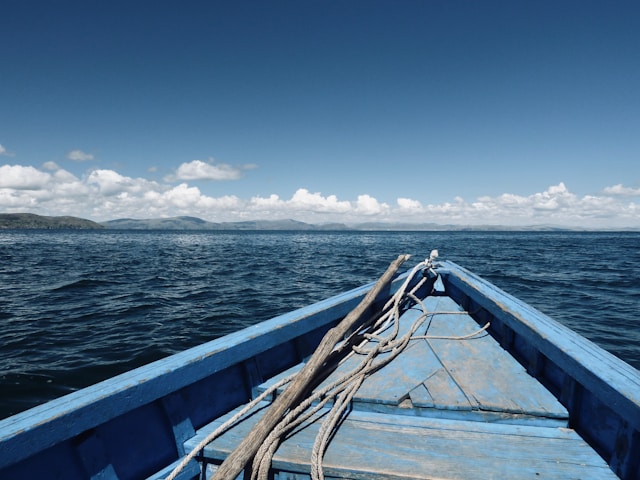
rStraddling the border of Peru and Bolivia, Lake Titicaca is more than just the world’s highest navigable lake—it’s a cultural and natural wonder steeped in legend and history. At an elevation of over 3,800 meters (12,500 feet), it offers travelers a blend of breathtaking scenery, vibrant local traditions, and ancient mysteries.
The Sacred Heart of the Andes
Lake Titicaca is revered as the birthplace of the Inca civilization. According to Inca mythology, the Sun God sent his children, Manco Cápac and Mama Ocllo, from the lake’s depths to establish Cusco, the heart of the empire. This mystical connection still resonates in the local communities that live along the lake’s shores.
Peruvian Side: Puno and the Uros Floating Islands
Puno, a lively town on the Peruvian side of the lake, serves as a gateway to many of Lake Titicaca’s attractions.
- The Uros Floating Islands
A visit to the Uros is like stepping into another world. These man-made islands are constructed entirely from totora reeds, which are also used to build the locals’ homes and boats. The Uros people, who have lived here for centuries, warmly welcome visitors to experience their unique lifestyle. - Taquile Island
Known for its stunning views and rich cultural heritage, Taquile Island is a UNESCO-recognized community where traditional weaving techniques are passed down through generations. Visitors can explore the island, enjoy local meals, and purchase intricate textiles as souvenirs.
Bolivian Side: Copacabana and Isla del Sol
Crossing into Bolivia, the town of Copacabana offers a tranquil starting point for exploration.
- Copacabana Town
Famous for its Basilica of Our Lady of Copacabana, the town blends natural beauty with spiritual significance. The Virgin of Copacabana is a revered figure, drawing pilgrims from across the Andes. - Isla del Sol (Island of the Sun)
This island is a treasure trove of Inca ruins, scenic hiking trails, and traditional Aymara villages. Many believe it to be the birthplace of the Sun God. Highlights include the Pilko Kaina Palace and breathtaking views of the lake from its highest points.
Natural Beauty and Outdoor Adventures
Lake Titicaca’s surroundings are a haven for nature lovers and adventure seekers.
- Kayaking and Boating
Explore the lake’s vastness by kayak or traditional reed boats. The calm waters and panoramic views make for a serene experience. - Hiking Trails
Many trails around the lake offer incredible views and insights into local flora and fauna. Don’t miss the hikes on Isla del Sol and Taquile Island.
Local Cuisine and Culture
The highlands around Lake Titicaca are a culinary delight. Try trucha (trout), freshly caught from the lake, alongside chuño (freeze-dried potatoes) and quinoa-based dishes. Engage with the local Quechua and Aymara communities, who share their traditions, music, and dances with visitors.
Practical Travel Tips
- Acclimatize to the Altitude
At such high elevations, it’s essential to adjust slowly to avoid altitude sickness. Stay hydrated and take breaks during activities. - Best Time to Visit
From May to October, the dry season offers clear skies and ideal conditions for exploring. - How to Get There
- In Peru, reach Puno via bus or train from Cusco or Arequipa.
- In Bolivia, Copacabana is accessible from La Paz by road.
Travel Planning Assistance
Exploring the vastness of Lake Titicaca can be overwhelming, but reputable travel agencies like Roomchai Limited can tailor itineraries, arrange guided tours, and ensure a seamless journey across both countries.
Conclusion
Lake Titicaca isn’t just a destination—it’s an experience. From its spiritual significance to its awe-inspiring landscapes and rich cultural heritage, this sacred lake offers a journey into the heart of the Andes. Whether marveling at the floating islands or hiking the trails of Isla del Sol, you’ll leave with memories as vast as the lake itself.







